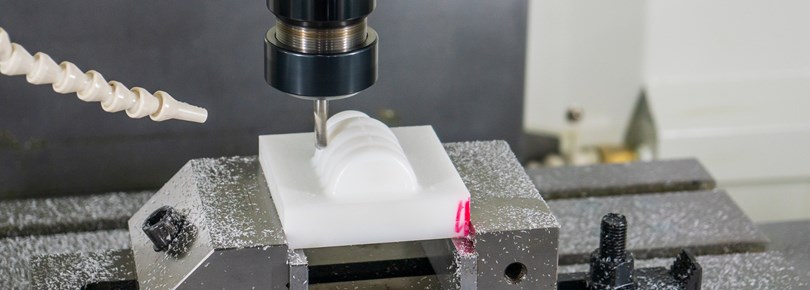CNC Turning and Milling - Advantages and Applications
July 2023

In the Computer Numerical Control (CNC) machining process, production equipment and tools are moved according to pre-programmed computer software. The procedure can be used to operate a variety of complicated machinery, including mills, CNC routers, lathes, and grinders.
Simply said, the distinction between CNC turning and milling is whether the machine itself or the raw material moves. While the cutting tools move around the material, it is maintained in place throughout CNC milling procedures allowing for greater precision and efficiency. Contrarily, CNC turning necessitates that the tools remain in position as the material is rapidly rotated to produce the shape.
WHAT IS CNC MILLING?
CNC milling is a subtractive manufacturing process that involves using computer-controlled machines to remove material from a block of plastic, metal or wood until the desired shape and dimensions are achieved.
TYPES OF MILLING MACHINES USED IN MANUFACTURING
CNC milling is performed using various axes, the more traditional of these is the 3-axis, which enables the cutting tool to move in three directions – known as X, Y and Z.
Additionally, four or more axes of machining, including worktable and tool rotation, are available with CNC milling. These add another level of flexibility. The most popular of these machines have five axes and can produce almost everything that can be made using CNC machining.
ADVANTAGES OF CNC MILLING
- Will produce tight tolerances, critical for parts that require a high degree of accuracy.
- Highly efficient, machines are capable of producing parts at a much faster rate than traditional manufacturing methods.
- From simple prototypes to complex end-use parts.
- High degree of consistency, ideal for large-scale production runs.
TYPICAL APPLICATIONS
- Turbine Blades
- Engine Components
- Suspension Parts
- Automotive Body Panels
- Aerospace Structural Parts
- Medical Devices
- Dental Implants
- Electronic Devices
- Seal Assemblies
WHAT IS CNC TURNING?
A CNC turning center's primary job is to rotate (or "turn") the workpiece while the machine's tools move in to remove extra material and mould it into the required shape. Initially, a device known as the "chuck" holds the material in position while it spins at various speeds in accordance with the machine's parameters.
TYPES OF TURNING MACHINES USED IN MANUFACTURING
Contrary to popular belief, CNC turning is a development from one of the earliest and most basic methods of part creation—the use of the lathe. Depending on the weight and tolerance of the workpiece, the machines are either horizontal or vertical, and the raw materials used are often rounded.
ADVANTAGES OF CNC TURNING
- CNC turning is mainly used for working on cylindrical or conical surfaces and creates these parts much more cost-effective and efficiently.
- Can produce discontinuous, continuous and fragmented chips.
- Cost-effective way to produce precision-turned components, with reduced labour and material costs.
- High accuracy and repeatability across multiple parts.
TYPICAL APPLICATIONS
- Large Diameter Parts
- Valves
- Hydraulic Components
- Pneumatic Components
- Engine Parts
- Landing Gear
- Steering Systems
- Medical devices
To find out how we can support your projects contact info@fluorocarbon.co.uk










